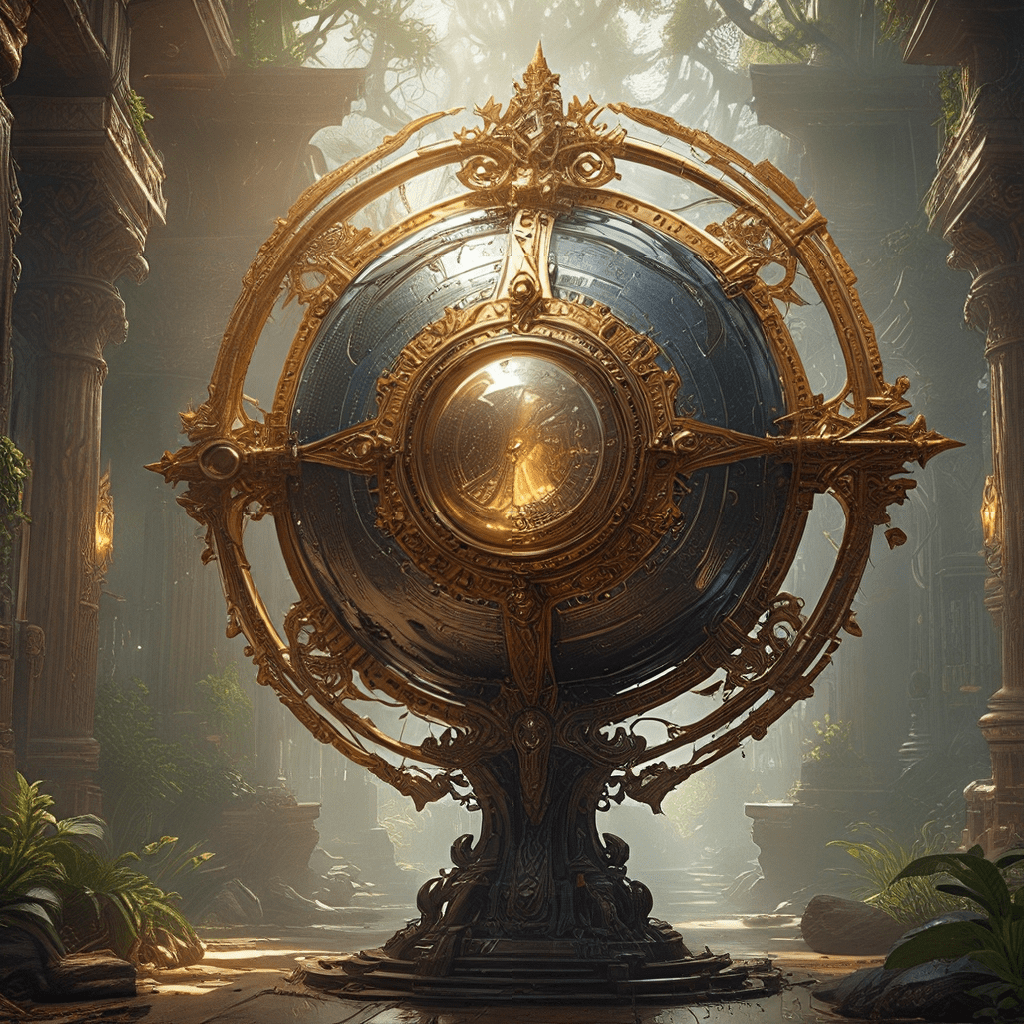The Myth of Origin: The Search for Identity and Meaning in Egyptian Mythology
In the ancient world, Egypt stood apart for its profound commitment to understanding the universe and its place within it. Egyptian mythology, a rich tapestry of stories passed down through generations, served as a powerful guide for navigating life’s mysteries. Unlike mere fables, these myths offered a framework for comprehending the origins of the cosmos, the creation of humanity, and the eternal cycle of life and death. At their heart, they explored the fundamental human search for identity and meaning, shaping the very essence of Egyptian culture.
1. Introduction: The Power of Myth
For ancient Egyptians, myths were more than just entertaining stories; they were living truths that shaped their worldview. These narratives provided a sense of order and meaning in a world often shrouded in mystery. They helped people understand the natural world, the forces that governed their lives, and their place within the cosmic order. Creation stories, in particular, held immense power as they explained the very beginnings of existence, offering a sense of connection to the divine source of life.
2. The Birth of the Cosmos: From Chaos to Order
The Egyptian creation myth begins with a state of utter chaos, represented by the primordial waters of Nun. This infinite ocean of nothingness existed before time and space, a realm of boundless potential. From this chaotic abyss emerged Atum, the self-created god, who embodied the essence of creation. Atum emerged from the waters, bringing forth light, order, and structure from the primal chaos. His very existence symbolized the triumph of order over chaos, the foundation upon which the universe would be built.
The emergence of Atum was not simply a random act; it was a deliberate act of divine will. This concept of deliberate creation was central to Egyptian belief, highlighting the purposeful nature of the cosmos and its connection to divine intention. It provided a sense of reassurance that the universe was not merely a product of chance but a manifestation of divine design.
3. The Creation of the World and Mankind: Divine Will and Divine Craftsmanship
Atum, the self-created god, played a pivotal role in shaping the world. He created the land, the sky, and the Nile River – the lifeblood of Egypt. He brought forth the world through a process of divine craftsmanship, demonstrating the power of creation inherent within the divine. The creation of mankind, too, was linked to Atum. Different myths describe his role in bringing forth humans from his own body, or from tears he shed, underscoring the intimate connection between the divine source and the human race.
These creation stories emphasized the divine origin of humanity and the ongoing connection between the human and divine realms. They conveyed a sense of responsibility, suggesting that humans were not merely passive creations but inheritors of a divine legacy, tasked with maintaining the harmony of the cosmos.
4. The Divine Order: The Ennead and the Cosmic Balance
Atum, the creator god, was not alone. He was joined by eight other deities, forming the Ennead – a council of gods responsible for various aspects of the cosmos. This divine hierarchy mirrored the social structure of ancient Egypt, with each god representing a specific power or function, from the sun god Ra to the goddess of wisdom, Maat.
The Ennead served as a model for maintaining order and balance in the universe. Each god’s role was vital for the well-being of the cosmos, and their actions reflected the interconnected nature of all things. This concept of cosmic balance was paramount to Egyptian belief, emphasizing the need for harmony and equilibrium in all aspects of existence.
5. The Struggle for Power: Conflict and the Birth of Evil
The harmonious order of the Ennead was not without its challenges. Set, the god of chaos and disorder, emerged as a rebel against the established order. He represented the forces of darkness, disruption, and the unpredictable nature of the world. His conflict with Horus, the god of kingship and order, embodies the eternal struggle between good and evil, light and darkness.
This myth of conflict illuminated the duality inherent in the world and the human experience. It acknowledged the presence of evil and the challenges posed by chaos, while highlighting the importance of maintaining order and justice. It also served as a reminder that the struggle between these opposing forces was an ongoing one, requiring constant vigilance.
6. The Cycle of Rebirth: The Myth of Osiris and the Afterlife
One of the most enduring and powerful Egyptian myths is the story of Osiris, the god of the underworld. Osiris, a benevolent ruler, was murdered by his jealous brother Set, symbolizing the struggle between good and evil. However, Osiris was resurrected, becoming the ruler of the afterlife and offering hope for eternal life to all who lived righteously.
The journey of the soul in the afterlife, as depicted in the myth of Osiris, was a central element of Egyptian belief. The judgment of Osiris, where the deceased’s heart was weighed against the feather of Maat (truth and justice), underscored the importance of ethical living and the consequences of one’s actions. This emphasis on the afterlife provided a sense of purpose and accountability, motivating individuals to live a virtuous life in preparation for their final journey.
The myth of Osiris also highlights the cyclical nature of life and death. The resurrection of Osiris represented the potential for renewal and rebirth, both in the afterlife and in the natural world. It offered comfort and hope in the face of death, reminding people that even in the face of mortality, life was a continuous cycle of transformation and renewal.





